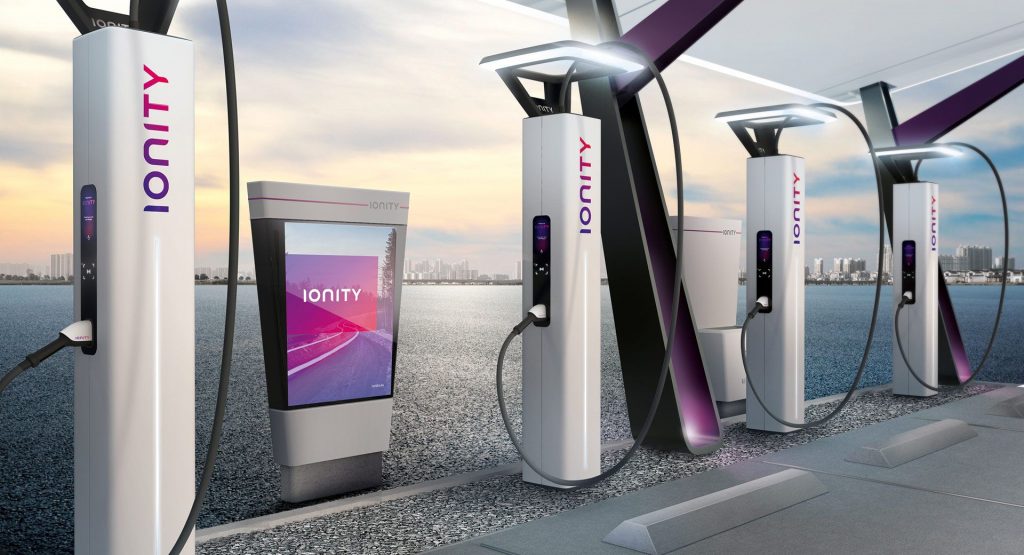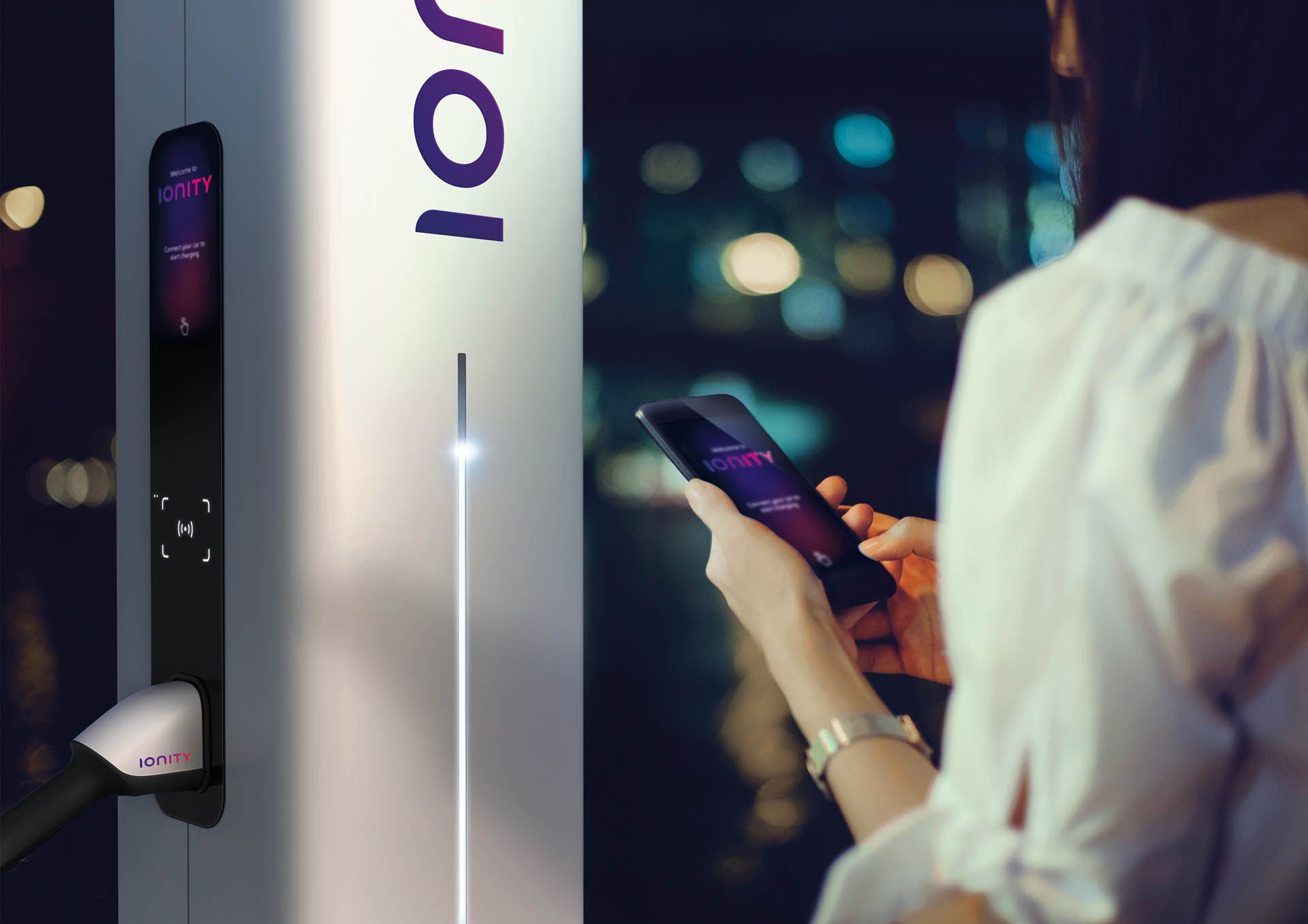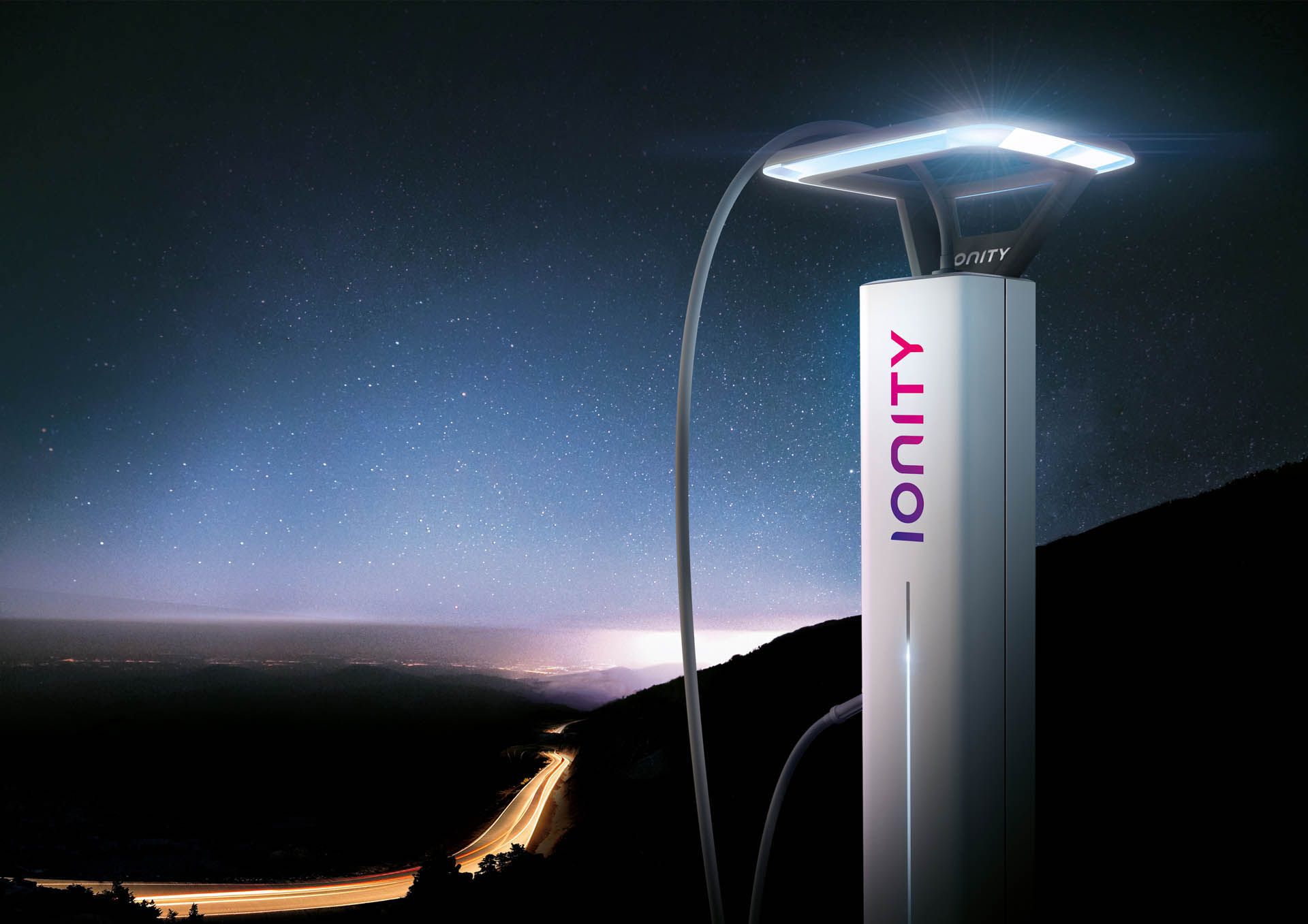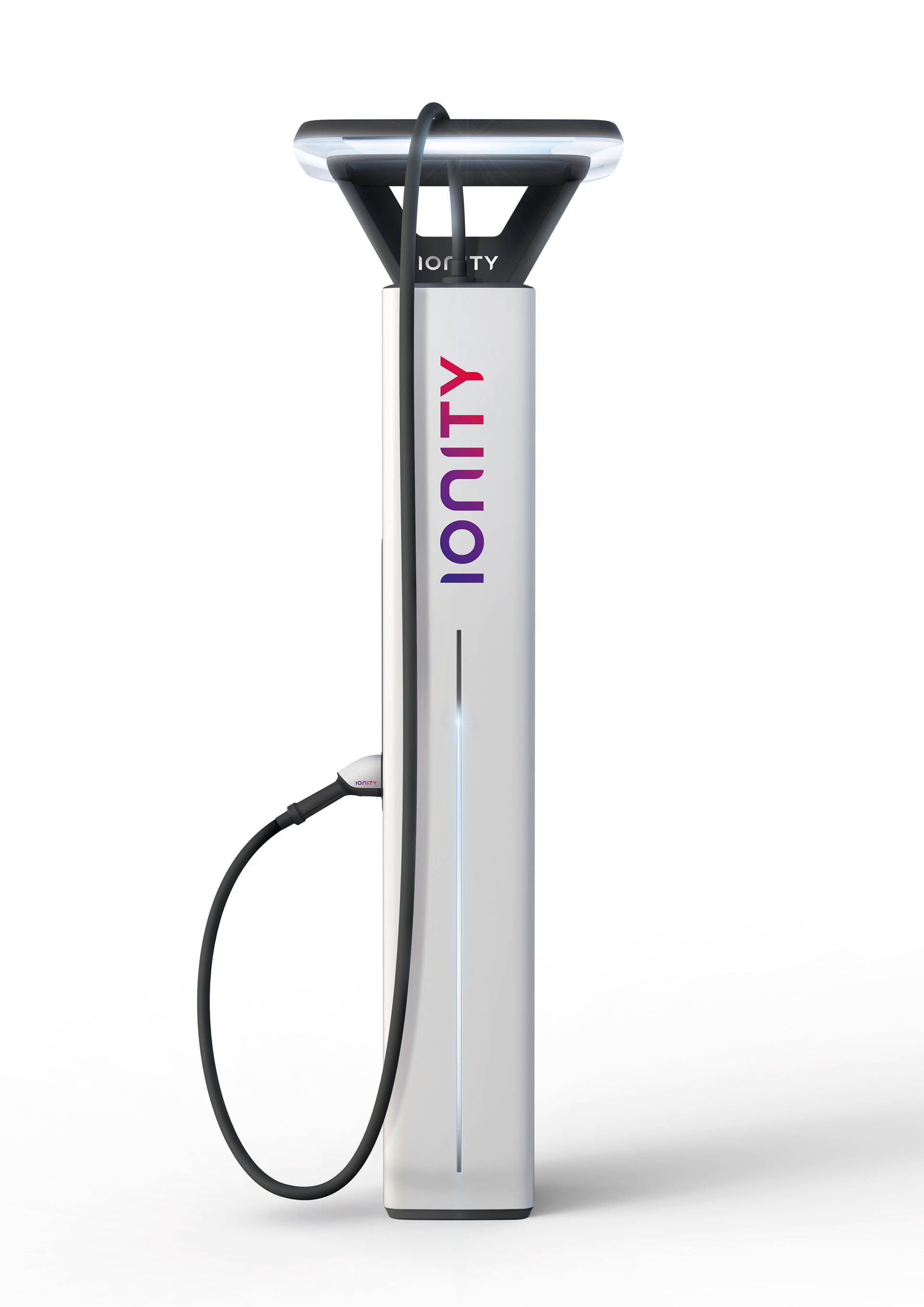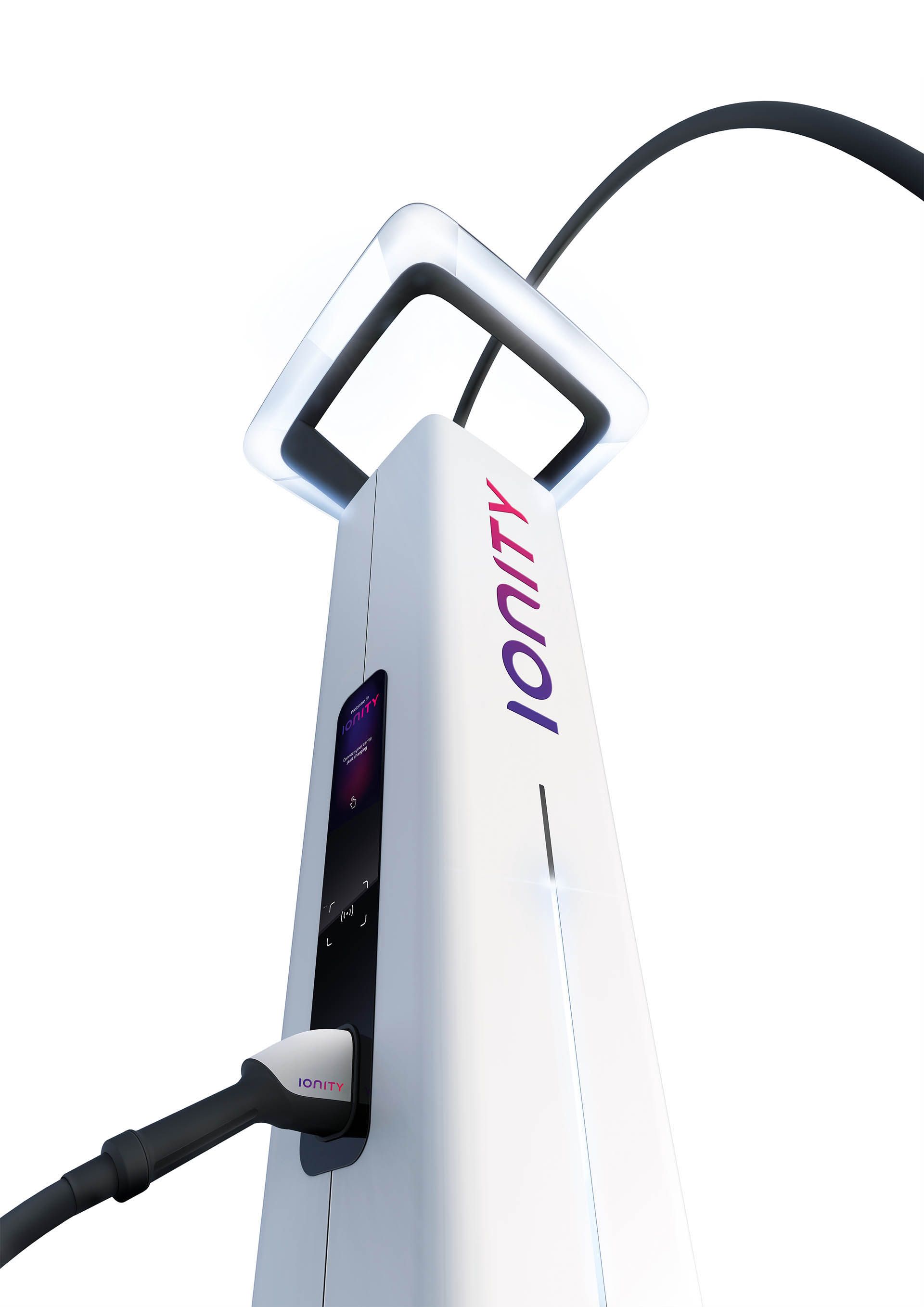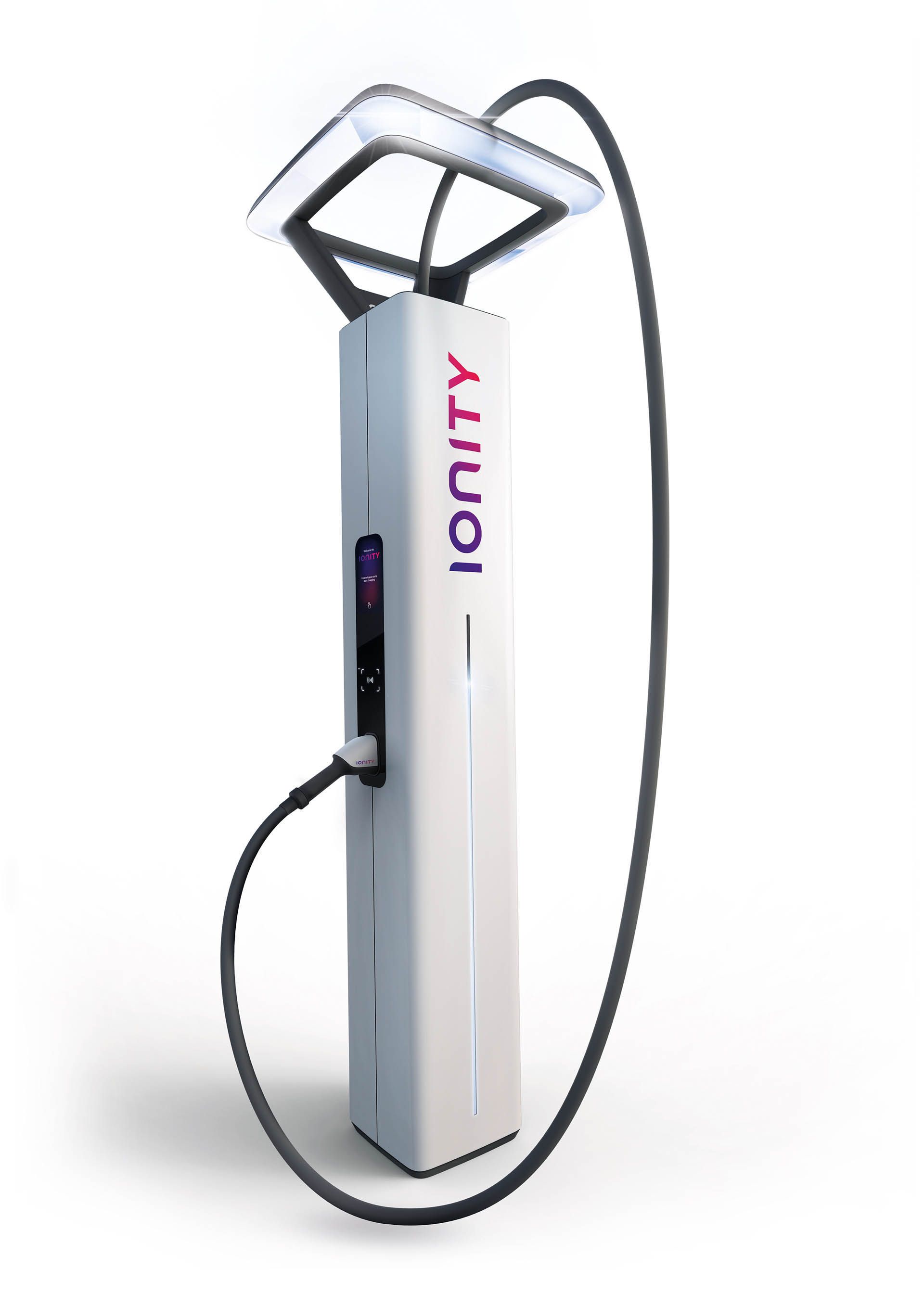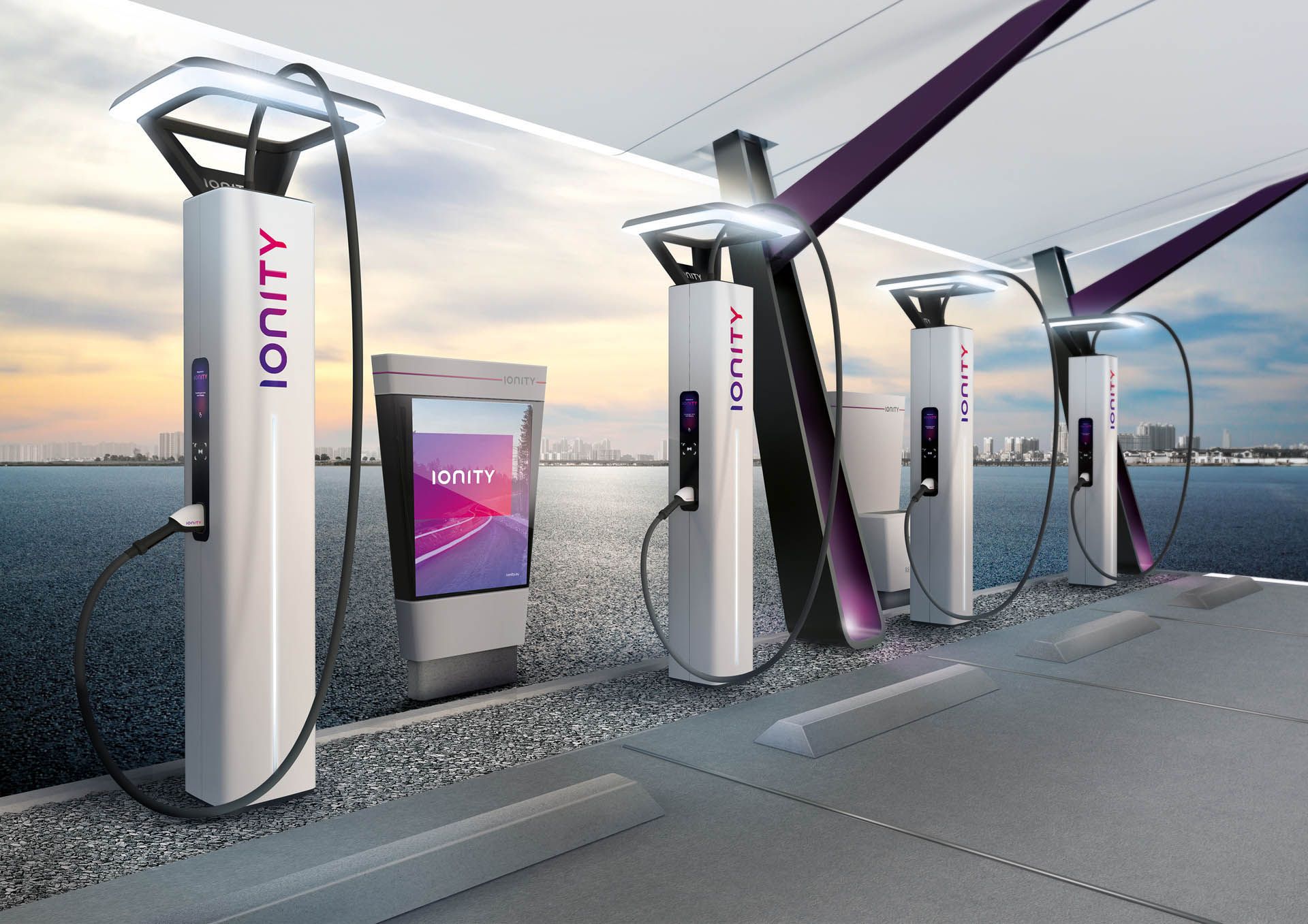Instead of each installing their own, several of the world’s largest automakers are teaming up to develop a joint network of rapid electric-vehicle charging stations across Europe. But with each participating automaker having its own designers on hand, who would they pick to design the stations?
The answer is Designworks, BMW‘s quasi-independent design studio. It’s now working with Ionity (as the joint venture is called) to design the charging station architecture, the charger pylons themselves, and the entire digital interaction concept. And this is what they’ll look like.
“For selection of the design partner, our criteria included a comprehensive understanding of future mobility as well as experience outside of the automotive industry, competence in both analog and digital interfaces, pronounced intercultural expertise, and the ability to develop concepts with a view to future contexts,” said Ionity CEO Michael Hajesch.
“In creating the first Pan-European HPC network, we are looking to give electromobility a boost toward a breakthrough in Europe. Design, with the tremendous potential it has to reach people and influence them in a positive manner, is a key factor for us here.”
A joint initiative between BMW, Daimler, Volkswagen, and Ford, Ionity aims to install 400 high-power charging stations along major highways across Europe by the end of 2020. Each station will feature up to six chargers. And they’ll be spaced at a distance of about 120 kilometers (75 miles) from each other. So an electric vehicle with at least that much range will be able to leapfrog from one to the other along its route, eliminating range anxiety and opening up Europe’s highway network for electric vehicles to criss-cross the continent.







